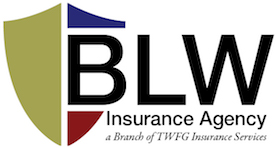The global pandemic has created some unique challenges for small business owners hoping to mitigate health and safety risks for their employees. Social distancing, mask-wearing, frequent hand washing, and hand sanitizer are now routine practices. But health and safety needs for businesses existed and will extend well beyond the COVID-19 pandemic. Small business owners should consider other common day-to-day health risks, plan how to reduce those risks, and prepare a proper response for work-related injuries or accidents.
Perform a hazard identification and assessment
According to the National Safety Council, 84% of all non-fatal workplace injuries come from overexertion and bodily reaction; slips, trips, and falls; and contact with objects and equipment. Consequently, many employers and their employees don’t recognize that these hazards exist until after accidents occur. Most workplace health concerns can be eliminated or reduced with a careful assessment of the work environment.
The Occupational Safety and Health Administration (OSHA) offers a list of recommendations for performing a self-assessment. We also recommend holding a session with your employees to get them involved in this assessment. Employees are more likely to understand risks and actively avoid them if they’re a part of the process for identifying risks in partnership with you.
Not comfortable performing your own assessment? Consider contracting an occupational risk assessor who can work with you and your employees to identify risks unique to your business, and assist you with creating mitigation plans.
Hold regular safety training sessions
Once you know what safety issues might exist within your business, hold regular sessions with employees to review these risks. What you discuss will vary based on your industry, but some common concerns and topics could include:
- Physical awareness of surroundings
- Asking for assistance with heavy or awkwardly shaped objects
- Alerting cleaning staff immediately when spills or trip hazards exist
- Reviewing proper usage of equipment that may carry a risk of injury
There’s no one way to perform safety training and review sessions with your staff. For example, you could create training material and hold weekly, monthly, or quarterly safety talks, walkthroughs, or discussion sessions with employees. However, training new staff as soon as possible will always be important.
Depending on your ability, you may want to have a staff member dedicated to the maintenance of safety protocols or hire a full-time safety manager.
Carry workers’ compensation equal to your legal requirement
Almost every business operating in California, regardless of size, must carry worker’s compensation insurance. Even a small business with just one employee must have a worker’s compensation policy in place for that employee. The cost of worker’s compensation will largely depend on three factors:
- The industry class code (available here)
- The size of your payroll
- Your business’ previous workers’ compensation claims history
There is no across-the-board standard rate for workers’ compensation insurance. The base rate for insurance will be higher if you operate in a high-risk industry. California does allow waivers if you employ independent contractors, but you’ll need to provide solid documentation that those workers fulfill the independent contractor classification.
Workers’ compensation insurance is a cost of doing business in California. A lack of coverage can result in financial damage to your business and its reputation. Injured workers can sue your business if workers’ compensation insurance is unavailable to them. And failure to provide workers’ compensation as an employer in California is a criminal misdemeanor that can result in a $10,000+ fine or up to one year in county jail (or both).
Let us help you get started with your worker’s compensation needs. We’ll walk you through the process, help you determine the proper rate based on your industry, payroll, and history, and get you the most up-to-date workers’ compensation policy available.


